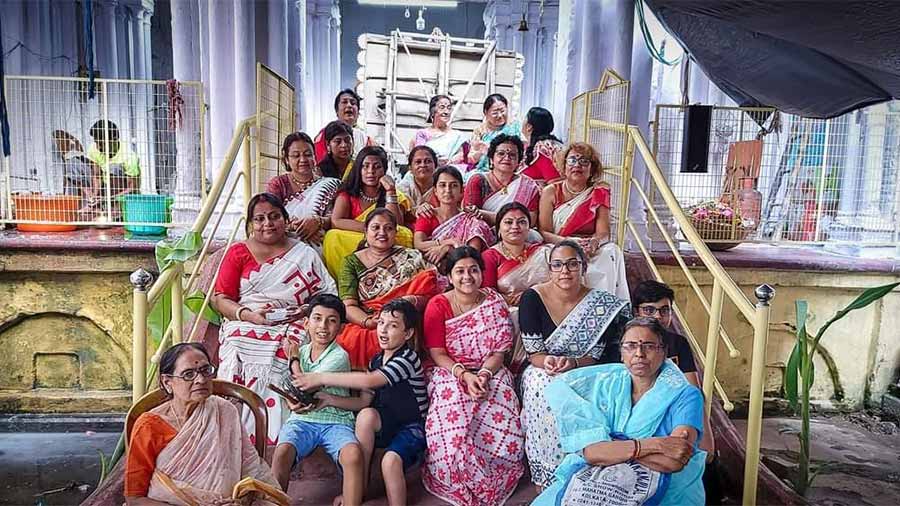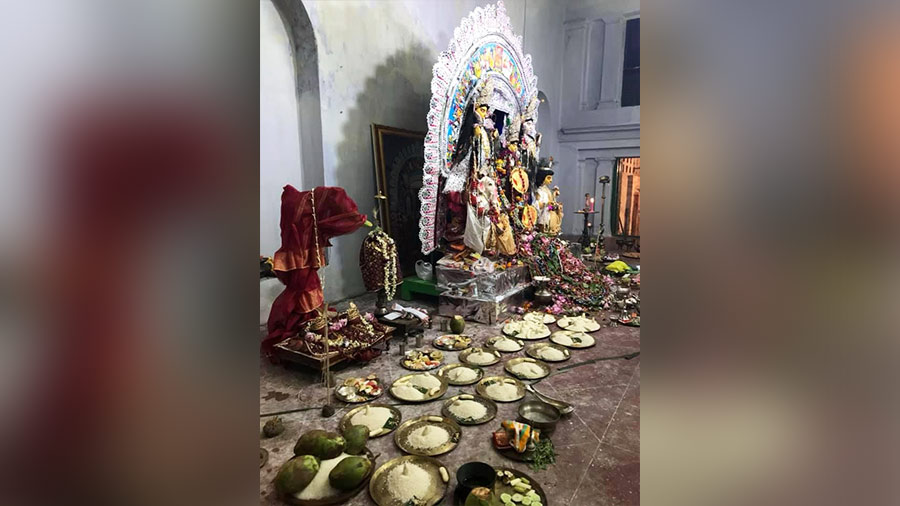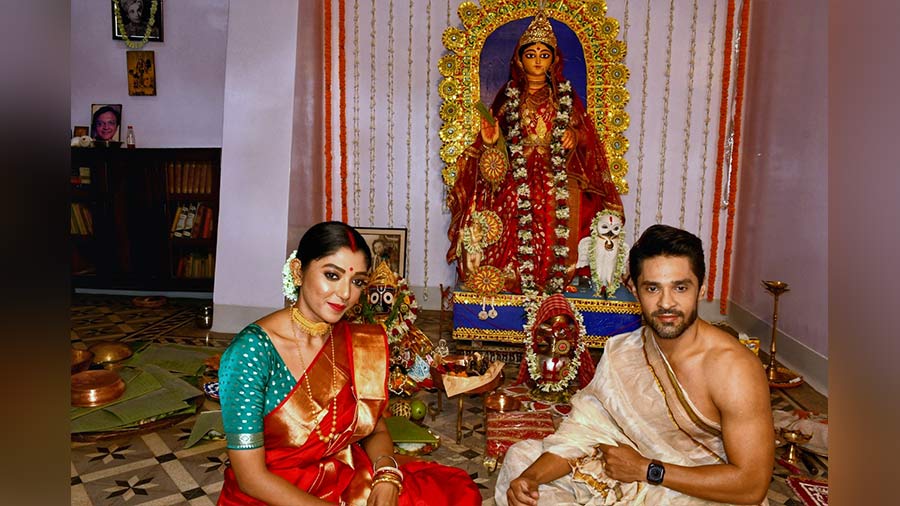The puja of ‘ghorer meye’ Lokkhi or Lakshmi, which follows Durga Puja every year, is conducted in most households in Bengal to usher wealth and prosperity. But there’s an element of diversity even in this unity of devotion.
For example, in a traditional 173-year-old family pujo in Kolkata’s Bowbazar, two Lakshmi shila (stone slabs) are placed on dhaan (paddy) and worshipped on this occasion, while at another family pujo in Hooghly’s Chandernagore, Lakshmi Puja is held on the evening of Kali Puja.
Ghosh Nibash

Goddess Lakshmi is worshipped on the Kali Puja day in the Ghosh Nibash of Chandernagore
Photograph courtesy: Family members of Ghosh NibashThe 227-year-old Durga Puja traditions at Ghosh Nibash in Chandernagore have always been followed by Kali Puja and Jagaddhatri Puja over the next 30 days.
Unlike the traditional Kojagori Lakshmi Puja, which takes place after Durga Puja, Ghosh Nibash’s Lakshmi Puja is held on the evening of Kali Puja. What lends uniqueness to this tradition is their use of powdered rice to create idols of Lakshmi, Narayan and Kuber. Powdered rice is kneaded with different colours and given shapes. The ritual of ‘Olakshmi Bidaay’ follows, which is essentially dung kneaded into a form with a broken kulo’s wind used to ward away the evil that the dung represents.
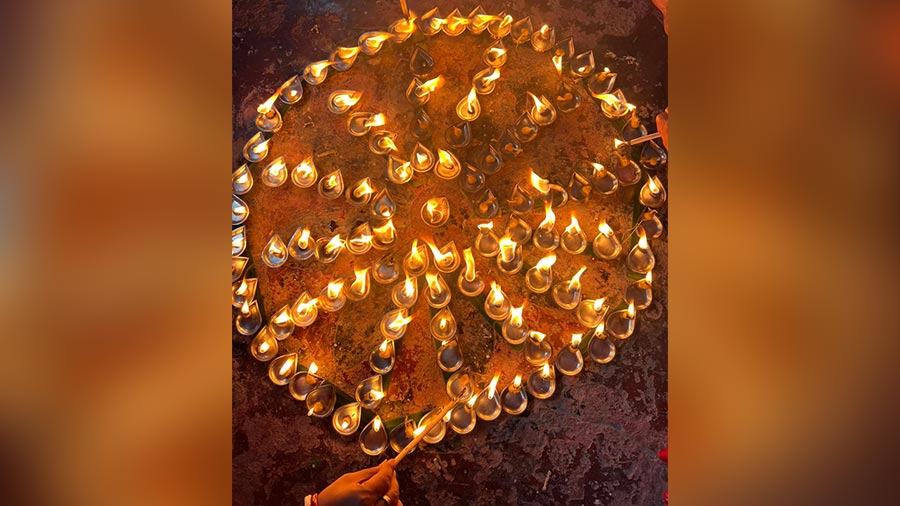
Earthen lamps are lit on the eve of Kali Puja at the Ghoshes
Photograph courtesy: Family members of Ghosh NibashGhosh Nibash also follows the tradition of Dakshina Kali Puja, where the Kali idol is brought home after sunset and is taken out for immersion before sunrise. On the lines of their Durga Puja traditions, Lakshmi Puja arrangements include shukno bhog cooked without salt, while for Kali Puja, a whole fish is offered to the goddess, away from the lines of the Vaishnav tradition which is usually followed at Ghosh Nibash.
Thanthania Chandra Bari
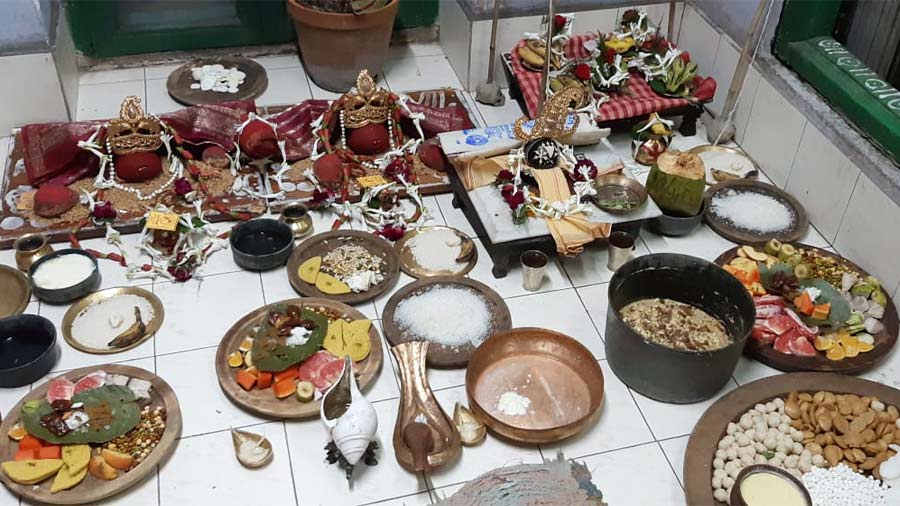
‘Bhog’ offered to the two Lakshmi ‘shilas’ at Thanthania Chandra Bari (visible at top left-hand corner)
Photograph courtesy: Irene ChandraAt Thanthania Chandra Bari in Bowbazar, the Kojagari Lakshmi Puja is held without worshipping an idol. Instead in their quaint thakur ghor (prayer room), two Lakshmi shila (stone slabs) are placed on dhaan (paddy) and worshipped. “Since we already worship the Durga idol at our home, we don’t worship any other idols. On Saraswati Puja, we worship the veena and on Kali Puja, we worship goddess Lakshmi,” says Irene Chandra, one of the seventh-generation daughters-in-law of the family.
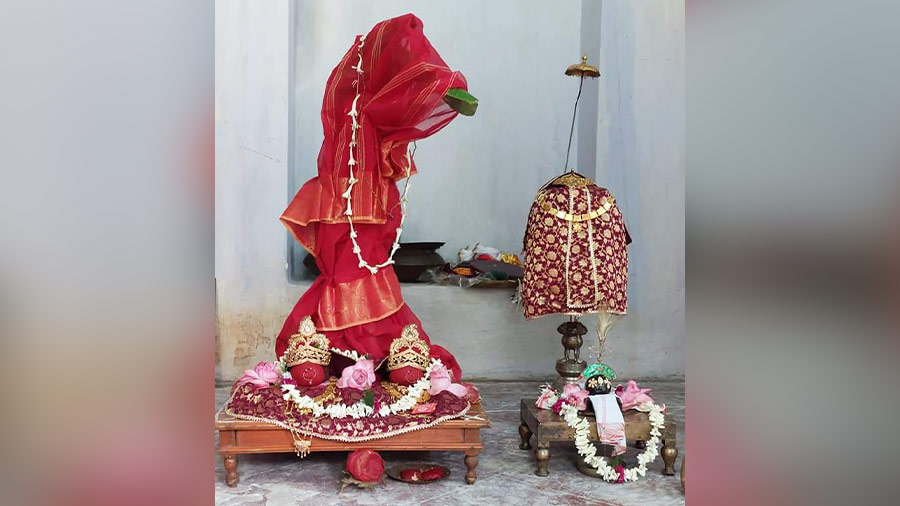
The Lakshmi ‘shilas’ or stone slabs being worshipped at Thanthania Chandra Bari
Photograph courtesy: Irene ChandraTheir kul debota (family god) is Narayan along with the two Lakshmis who are worshipped twice daily. Lakshmi Puja is held in the evening and along with that, shinni (milk mixed with flour, banana, and mishti) is made. The shinni, which is also supposed to be offered on Ashtami during Durga Puja, is only made on Lakshmi Puja as an integral part of the bhog. The bhog offered also includes fruits, mishti, rabri, doi, and taaler fonpor (seed of palms).
Eight different kinds of fried food items or aat bhaja such as chire bhaja (fried flattened rice), badam bhaja (fried almonds), chal bhaja (fried rice grain), among others, feature as a part of the bhog. “For worshipping Narayan, the bhog comprises various kinds of sweets made of kheer (rice pudding). However, for our Lakshmi Puja, sweets made of coconut are the most important,” said Irene.


